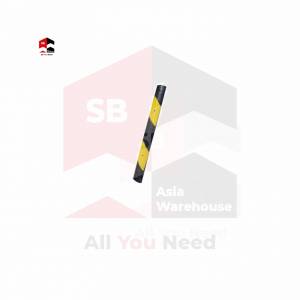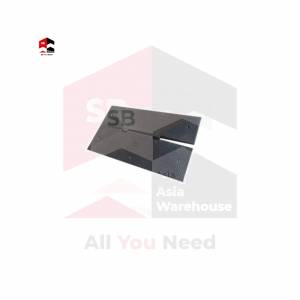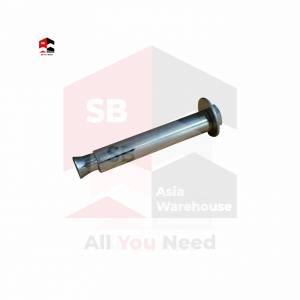Showing all 4 results
Best Rubber Speed Hump Supplier in Malaysia
Asia Warehouse is dedicated to providing top-quality rubber speed humps in Malaysia to enhance road safety and traffic control. Our rubber speed humps are designed for durability and effectiveness in reducing vehicle speeds in various settings, including residential areas, parking lots, and commercial zones. With a focus on superior materials and expert craftsmanship, our speed humps are engineered to withstand heavy traffic and adverse weather conditions, ensuring long-lasting performance. Choose us as your trusted supplier and take the first step towards creating safer and smoother traffic flow in your community or facility.
Frequently Asked Questions Regarding Rubber Speed Hump Malaysia
What is the speed hump?
A speed hump, also known as a road hump or undulation, is a rounded bump placed across a road to slow down vehicles. They’re typically found in residential areas, school zones, and other places where pedestrian safety is a concern. Unlike sharp speed bumps, they’re designed for slower speeds (around 15-25 km/h). They create a gentle rocking sensation at the appropriate speed, prompting drivers to slow down without jarring or damaging vehicles.
What is the difference between speed bumps and humps?
In Malaysia, the terms “speed bump” and “speed hump” are often used interchangeably, which can be confusing! However, there are some subtle differences in how they’re typically applied:
Speed Bumps:
- Shorter and taller: Usually less than 3 meters long and around 8-10 cm high.
- Steeper gradient: Designed to force drivers to slow down significantly, often to a crawl, to avoid bottoming out their vehicles.
- More common in private areas: Often found in parking lots, gated communities, and driveways to deter speeding and encourage cautious manoeuvring.
Speed Humps:
- Longer and gentler: Can range from 3 to 10 meters long and are typically 5-7 cm high.
- Slower and smoother transition: Designed to encourage a steady reduction in speed rather than a sudden jolt.
- More common on public roads: Frequently used in residential areas, school zones, and other places where a lower overall speed is desired.
What is the objective of rubber speed humps?
The main objective of rubber speed humps is to force vehicles to slow down, primarily in areas where pedestrian safety is crucial, like residential streets and school zones. By gently “bumping” cars that drive over them too fast, they encourage drivers to be more cautious and reduce the risk of accidents involving pedestrians, cyclists, and other vulnerable road users.
What happens if you hit a speed bump too fast?
Several adverse outcomes can occur if you hit a speed bump too fast. Firstly, the impact can cause damage to your vehicle’s suspension system, shocks, and tires. The abrupt force may lead to bottoming out, where the vehicle’s underside makes contact with the ground. This can result in structural damage, especially if the speed bump is exceptionally high or your vehicle has low ground clearance. Additionally, hitting speed bumps at excessive speeds can compromise your control over the car, increasing the risk of accidents, loss of traction, or damage to other components. It is crucial to approach speed bumps at a safe and recommended speed to ensure your vehicle’s well-being and safety.
Are there different types of speed bumps in Malaysia?
There are six types of speed bumps in Malaysia, each with its own purpose and modular design:
- Speed Hump: The most common type, these are gentle, rounded rises in the road designed to slow traffic to around 15-25 mph. They’re often found in residential areas and school zones.
- Speed Bump: Shorter and taller than humps, these bumps force drivers to slow down significantly, often to a crawl, to avoid bottoming out their vehicles. They’re typically used in private areas like parking lots and driveways.
- Rumble Strip: A series of small, closely spaced bumps that create a vibrating sensation when driven over. They’re often used on highway shoulders or as lane dividers to alert drivers drifting out of their lane.
- Channelizing Hump: These are elongated humps used to guide traffic flow, often at intersections or around curves, encouraging drivers to stay within designated lanes.
- Table-Top Speed Hump: These flat-topped humps force all vehicles to slow down to the same speed, regardless of size or weight. They’re commonly used in areas with mixed traffic, like truck routes and bicycle lanes.
- Raised Crosswalk: A raised platform extending across a crosswalk, forcing drivers to come to a complete stop before proceeding. These are often used with flashing lights or pedestrian signals to enhance safety.




